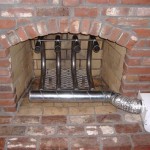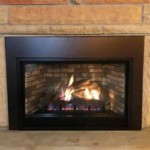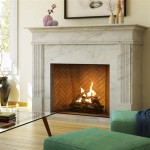Outdoor Fireplace Ideas: Enhancing Your Outdoor Living Space
An outdoor fireplace can significantly elevate a backyard from a simple outdoor area to a captivating gathering spot. The appeal lies in the combination of warmth, ambiance, and the visual charm of flickering flames. Planning for an outdoor fireplace involves careful consideration of design, materials, functionality, and safety. This article explores various aspects of outdoor fireplace concepts to help in the design and construction of an ideal outdoor living space.
The integration of an outdoor fireplace extends the usability of outdoor spaces beyond the warmer months. It creates a focal point for entertainment, relaxation, and even cooking. Furthermore, it contributes to the aesthetic value of a property, potentially increasing its overall market value. The scope of outdoor fireplace design is vast, ranging from straightforward, pre-built units to elaborate, custom-designed constructions.
Before embarking on the construction of an outdoor fireplace, it is crucial to address certain preliminary considerations. Local building codes and regulations must be thoroughly investigated to ensure compliance. This includes understanding required setbacks from property lines, chimney height restrictions, and any permits required for construction. Additionally, safety considerations, such as proximity to combustible materials and prevailing wind direction, should be factored into the design.
The fuel source for an outdoor fireplace is a critical determinant of its overall functionality and environmental impact. Wood-burning fireplaces offer the classic appeal of crackling logs and a natural aroma. However, they also require a consistent supply of firewood and generate smoke, which may be a concern in certain areas. Gas-fueled fireplaces, on the other hand, provide a clean-burning and more convenient option, with the ability to adjust the flame intensity and eliminate the need for wood storage. Electric fireplaces offer a smokeless and ventless alternative, though they may lack the visual and tactile realism of wood or gas fireplaces.
Selecting the Right Materials
The selection of materials greatly influences the aesthetic appearance, durability, and cost of an outdoor fireplace. Common materials include brick, stone, concrete, and stucco. Each material possesses unique characteristics that lend themselves to different design styles. Brick offers a traditional and timeless look, while stone provides a more rustic and natural feel. Concrete can be molded into various shapes and finishes, allowing for greater design flexibility. Stucco provides a smooth and seamless surface that can be painted or textured to complement a wide range of architectural styles.
Brick is a classic choice known for its durability and resistance to the elements. It can withstand high temperatures and requires minimal maintenance. Brick fireplaces can be constructed in various patterns and colors, offering versatility in design. However, brick can be relatively expensive compared to other materials.
Stone fireplaces offer a natural and organic aesthetic. The irregular shapes and textures of stone create a visually appealing focal point. Stone can be locally sourced, adding a sense of place to the outdoor space. The cost of stone can vary depending on the type and availability. Installation of stone fireplaces requires skilled craftsmanship, as the stones must be carefully fitted together to ensure structural integrity.
Concrete is a versatile material that can be used to create a variety of fireplace designs. It can be poured into molds to create custom shapes and textures. Concrete fireplaces can be stained or painted to match the surrounding landscape. Precast concrete units are also available, offering a more affordable and convenient option. However, concrete can be susceptible to cracking in extreme temperatures.
Stucco is a smooth and seamless material that can be applied over a variety of surfaces. It provides a clean and modern look to outdoor fireplaces. Stucco can be painted or textured to match the surrounding landscape. It is relatively inexpensive and easy to install. However, stucco is more susceptible to damage from moisture and may require more frequent maintenance.
Design Considerations for Outdoor Fireplaces
The design of an outdoor fireplace should complement the existing architecture of the home and the surrounding landscape. The size and scale of the fireplace should be proportionate to the size of the outdoor space. A large fireplace can overwhelm a small backyard, while a small fireplace may be lost in a large outdoor area. The style of the fireplace should also be consistent with the overall design aesthetic of the home and landscape.
Consider the architectural style of the home when designing an outdoor fireplace. A traditional brick fireplace may be appropriate for a colonial-style home, while a modern concrete fireplace may be more suitable for a contemporary home. The surrounding landscape should also be taken into account. A rustic stone fireplace may blend well with a naturalistic landscape, while a sleek stucco fireplace may complement a more formal garden.
Seating arrangements around the fireplace should be carefully planned to maximize comfort and functionality. The seating area should be large enough to accommodate the desired number of guests. The seating should be arranged to provide comfortable viewing of the fire. Consider incorporating built-in seating to create a more cohesive and integrated design. Outdoor furniture should be durable and weather-resistant. Select cushions and fabrics that are designed for outdoor use.
Lighting is an important element in creating a warm and inviting atmosphere around an outdoor fireplace. Soft, ambient lighting can enhance the ambiance and provide visibility after dark. String lights, lanterns, and recessed lighting can be used to create a layered lighting effect. Consider incorporating landscape lighting to highlight the surrounding plants and features.
Integration with other outdoor features, such as patios, decks, and outdoor kitchens, is essential for creating a cohesive and functional outdoor living space. Consider the flow of movement between the fireplace and other outdoor areas. A well-designed outdoor space will seamlessly integrate the fireplace with the surrounding landscape and features.
Safety and Maintenance
Safety is paramount when operating an outdoor fireplace. Wood-burning fireplaces require careful attention to prevent the spread of embers and sparks. A spark screen should always be used to contain the fire and prevent embers from escaping. Never leave a fire unattended. Keep a fire extinguisher or a water hose nearby in case of emergencies. Ensure that the area around the fireplace is clear of combustible materials, such as dry leaves and branches.
Regular maintenance is essential for keeping an outdoor fireplace in good working condition. Wood-burning fireplaces should be cleaned regularly to remove ashes and creosote buildup. Creosote is a flammable substance that can accumulate in the chimney and pose a fire hazard. Gas fireplaces should be inspected annually by a qualified technician to ensure that the gas lines and burners are functioning properly. Inspect the fireplace structure for cracks or damage. Repair any damage promptly to prevent further deterioration.
Proper ventilation is critical for both wood-burning and gas fireplaces. Wood-burning fireplaces require a chimney or flue to vent the smoke and gases. The chimney should be properly sized and constructed to ensure adequate draft. Gas fireplaces also require ventilation, typically through a vent pipe that extends to the outside. Proper ventilation prevents the buildup of carbon monoxide, a deadly gas.
Wind direction should be considered when positioning an outdoor fireplace. Prevailing winds can carry smoke and embers in unwanted directions. Position the fireplace so that the smoke is directed away from the house and neighboring properties. Consider installing a windbreak to shield the fireplace from strong winds.
The type of fuel used in the fireplace can affect its safety and performance. Use only seasoned firewood in wood-burning fireplaces. Seasoned firewood burns cleaner and produces less smoke than green wood. Avoid burning treated wood, as it can release toxic chemicals into the air. Use only propane or natural gas specifically designed for outdoor gas fireplaces. Never use gasoline or other flammable liquids to start a fire.
By considering these key aspects of outdoor fireplace design, construction, and maintenance, homeowners can enhance their outdoor living spaces with a beautiful and functional focal point that provides years of enjoyment.

30 Outdoor Fireplace Ideas Cozy Fireplaces

Five Fabulous Outdoor Fireplace Ideas Coogans Landscape Design

Outdoor Fireplace Design Ideas Getting Cozy With 10 Designs Unilock

Outdoor Fireplace Ideas S
:max_bytes(150000):strip_icc()/bring-holidays-outside-x-50f80e4865984b36b603a1de82d2938b.jpg?strip=all)
23 Outdoor Fireplace Ideas For A Glowing Retreat

45 Beautiful Outdoor Fireplace Ideas Install It Direct

Outdoor Fireplace Design Ideas

Outdoor Fireplace Design Ideas Judd Builders Asheville Nc

45 Beautiful Outdoor Fireplace Ideas Install It Direct

30 Outdoor Fireplace Ideas Cozy Fireplaces








